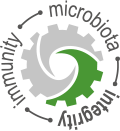Butyric acid is a fatty acid naturally produced in the large intestine (caecum and colon) of monogastric animals. It is produced by the intestinal microbiome from the fermentation of dietary fibres.
Up to 70% of the energy requirements of the intestinal enterocytes (the single layer cells that make up the intestinal barrier) is derived from the metabolism of butyric acid, which is directly absorbed from the intestinal lumen.

